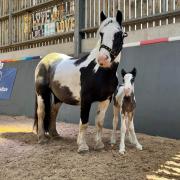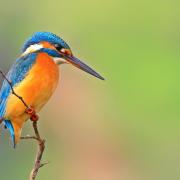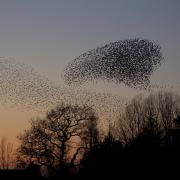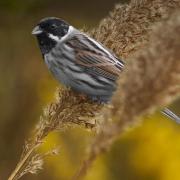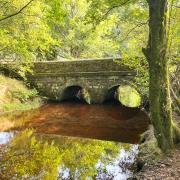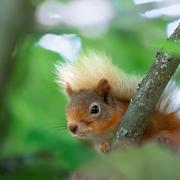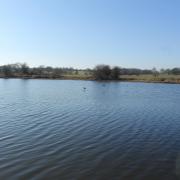Lancashire is the home of Britain's latest and most unusual nature reserves, attracting BBC Countryfile cameras and a potential 250,000 visitors
Early mornings are no problem for Sophie Leadsom. It’s 6am when the dawn chorus strikes up at Brockholes heralding the start of another day for the woman responsible for creating Lancashire’s newest nature reserve.
Brockholes is no ordinary place, meriting the arrival of the BBC’s Countryfile team to film part of a programme there. It’s the location that makes it so special. See the countryfile clip here
High above the reserve, millions of motorists will have watched it coming together as they drive along the M6 at Preston, providing a welcome change of scenery.
Those early morning commuters will not know it but the place is alive with reed and sedge warblers. ‘They sit on top of the reeds and sing their faces off, cocky as anything,’ says Sophie. ‘They bring the place to life.’
Bringing the place to life has been Sophie’s job over the past four years as Brockholes Reserve manager for the Lancashire Wildlife Trust. She and the team has designed and created habitats which will attract species and provide another fascinating attraction for visitors when it opens this spring.
That will be a defining moment. ‘For four years I have been concentrating on designing a site which will provide the best compromise between wildlife and people. It is estimated that we will have 250,000 visitors a year and my work has been to ensure that there is little impact on the wildlife. The proof will be when we have our wildlife living, unfazed, side by side with our visitors.’
Four years ago she arrived at the former quarry site, at Junction 31 of the M6 at Samlesbury. ‘It was a blank canvas. I surveyed the site and envisaged the habitats we needed to create,’ she says. The project had to work to UK Biodiversity Action Plan guidelines and came under close scrutiny from the Trust’s conservation committee.
Sophie’s targets were to create species-rich habitats, like reed beds, lowland meadow, wader ‘scrapes’ and various types of wetland, to attract reed warbler, sedge warbler, reed bunting mallard, gadwall, tufted duck, pochard, redshank, lapwing and snipe.
‘We are also an important stop-over point for migrating wading birds so we needed to make sure we were providing the best quality bed and breakfast for them too,’ she adds.
‘Many of these birds would have been here on the river flood plains years ago but they moved away as development and water controls affected the area.’
Unsurprisingly, man-made problems threw up the greatest challenges. ‘Because this is a restored quarry the ground has been moved around a great deal, so you never really � know what’s under your feet. The work has included moving a total of around 120,000 cubic metres of earth and making sure none of it ended up in the adjoining River Ribble.’
There have been many high points which proved to Sophie and the Brockholes team that they are heading in the right direction. ‘In 2010 we had two pairs of redshanks nesting for the first time; on the island we had six breeding pairs of little ringed plovers, in the past there was just a single pair; and in 2008-9 sedge warblers increased from 14 pairs to 40.’
In spring the public will see the results of Sophie’s work when they visit the site. Her plan is that visitors will come across wildlife which is familiar to them - blue tit, great tit, spotted woodpecker, long-tailed tit, scores of ducks and kingfisher. Birds of prey are also prevalent on the site - kestrels, ospreys, sparrowhawks, peregrines and merlins. A sand martin wall is being constructed, which will provide a focal point for visitors who want to see these little birds performing fantastic displays.
There will be plenty of mammals, too. ‘I was watching a pair of roe deer from my office today, but we have a big population of brown hare, weasels and stoats. Badgers have been spotted. ‘In spring and summer the site is also teeming with butterflies and dragonflies, and other insects to keep the bird population contented.’
All shipshape
Brockholes is due to open in spring 2011 and is being named the ‘unreserved reserve’. People of all ages can visit the site, explore and enjoy the wildlife and finish off a busy day in the floating visitor centre, which is the first of its kind in the UK.
The visitor centre will include education and interpretation for all ages alongside a caf�, shop and conference facilities.
It is an exciting time for everyone involved, but for Sophie it will continue to be a work in progress. And every morning begins with that noisy greeting from the warblers in the reeds. She says: ‘I get a kick out of that. It puts a really big smile on my face to start the day.’
View the latest video diary entry from January 2011
Follow the Brockholes story at www.brockholes.org/about for all the latest news and video diaries.
Or on twitter @VisitBrockholes



